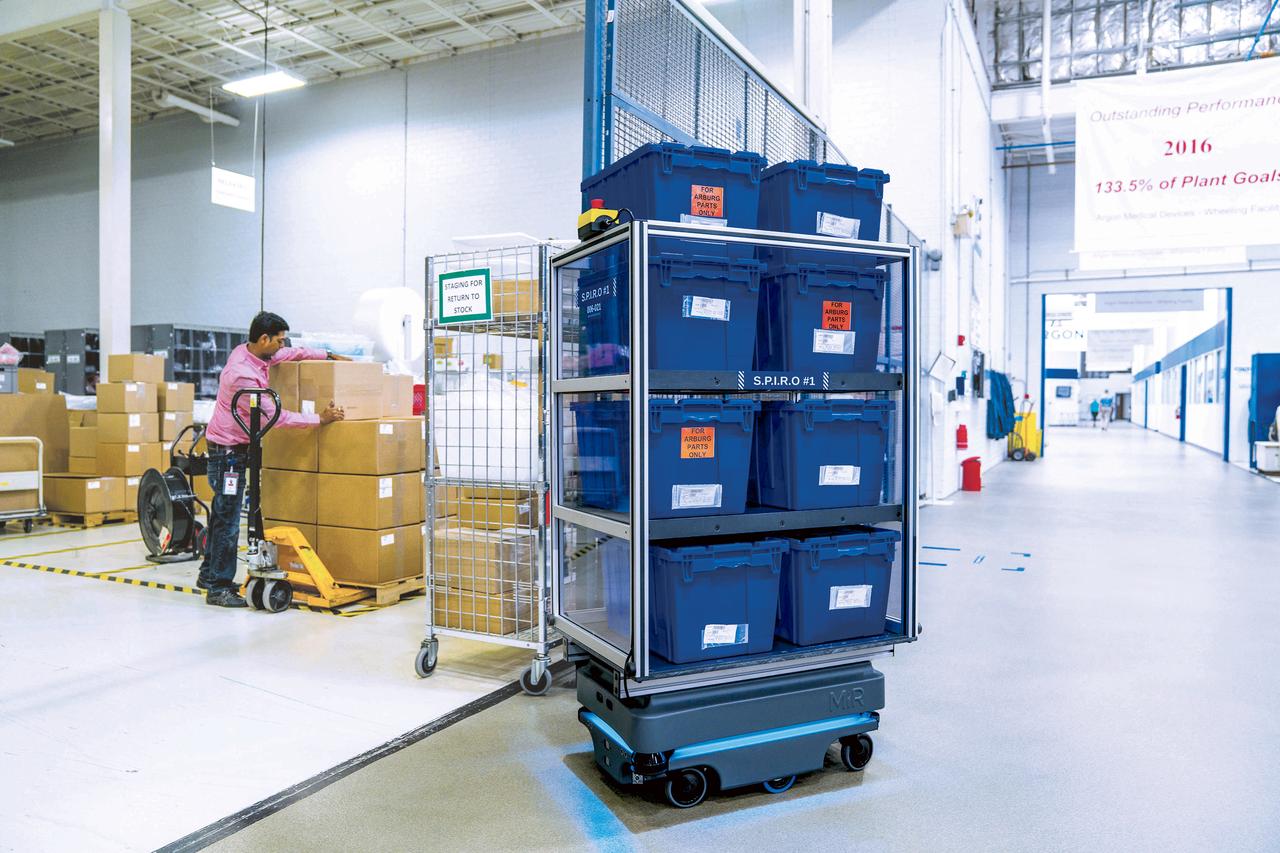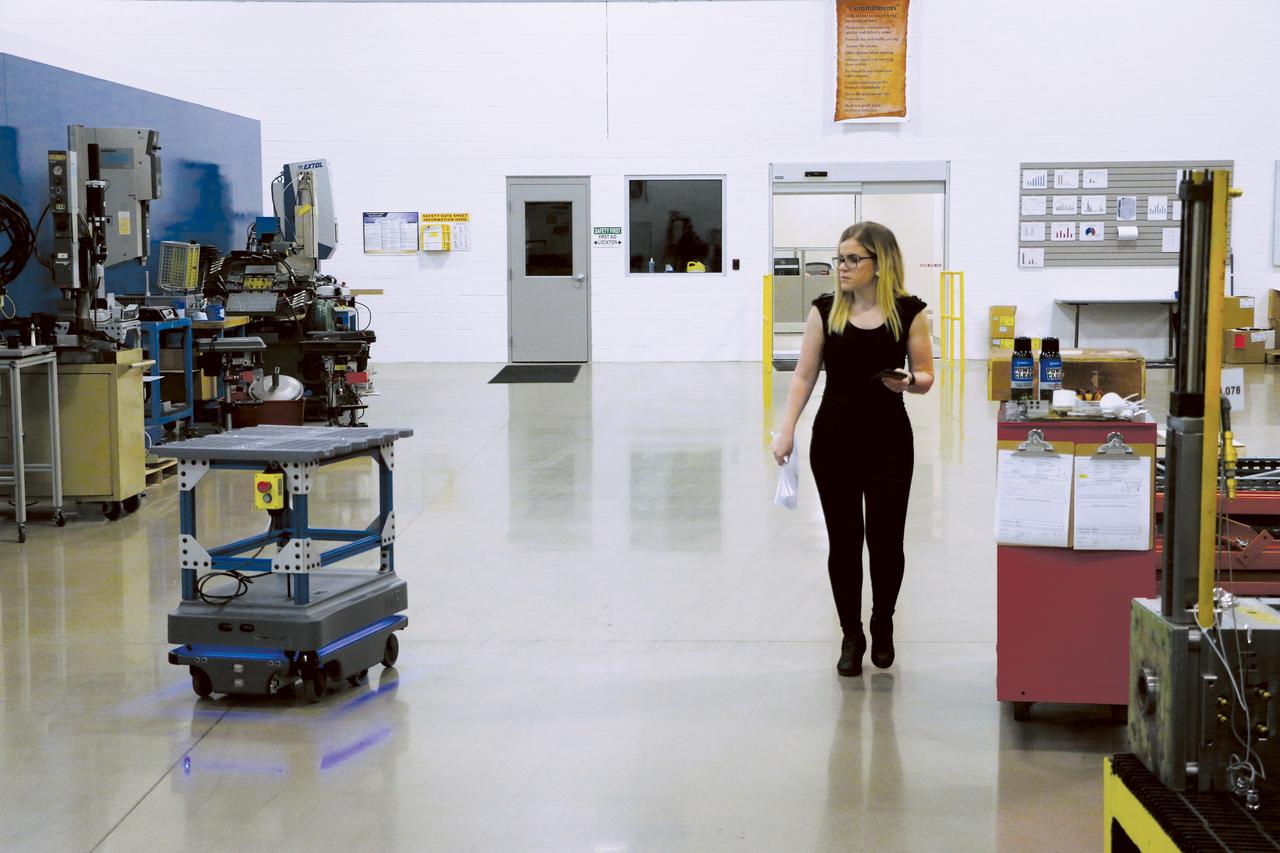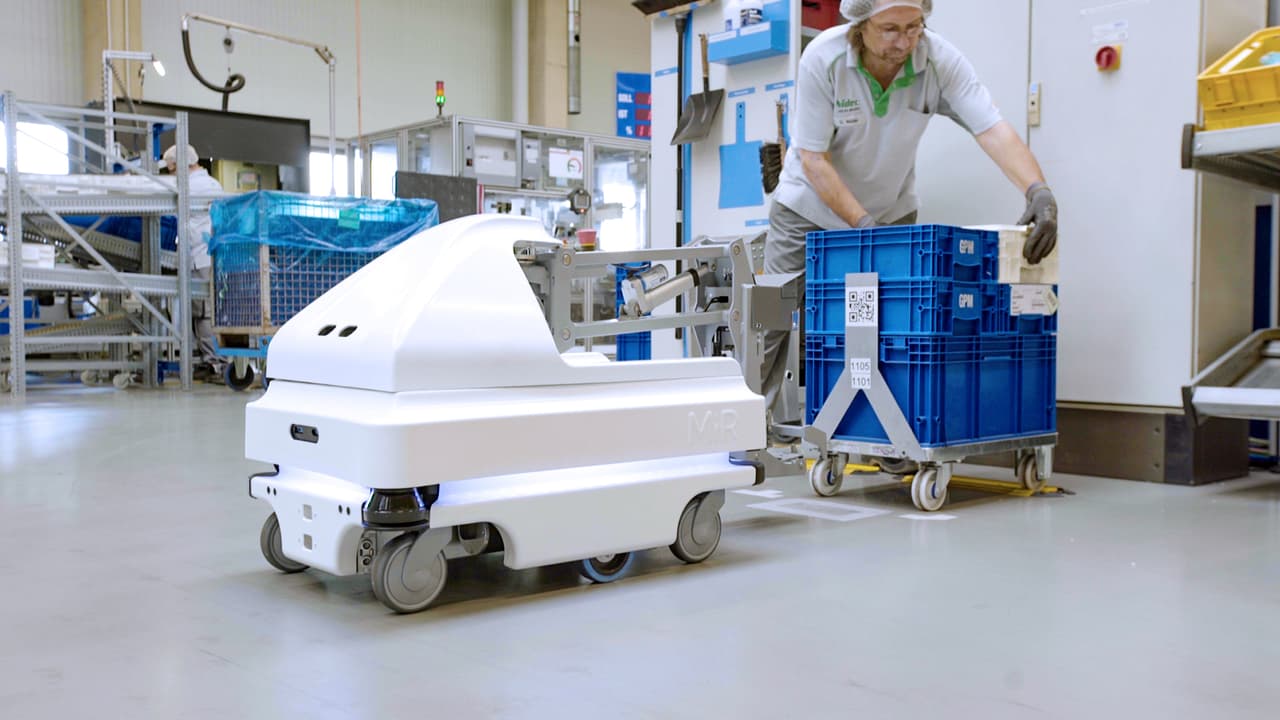Automation Game?
Just Starting the
Three Steps to Make the Jump Easier and More Cost-Effective
Management
If you’re still considering taking the first—or possibly next—step in your automation journey, start with the following steps to facilitate the process, and feel more comfortable doing it.
By Jeff Burnstein
More than a year into the COVID-19 pandemic, two things have become steadily clear: First, the overall trend associated with purchasing and deploying robots for applications such as process improvement and quality assurance continues, with stats from The Association for Advancing Automation (A3) showing a 20 percent increase in robot orders in Q1 2021 over the same period last year. Second, the pandemic actually accelerated trends that were already underway, including more non-automotive companies deploying robotics. As these companies continue to experience, robotics and other forms of automation help keep factories, warehouses, and offices up and running, especially when having difficulties hiring or bringing workers into the facilities. It also keeps productivity and quality high and can even help disinfect their workplaces, all helping companies remain globally competitive and be prepared for future pandemics.
Companies reluctant to jump on the automation bandwagon—or that have only dabbled with one or two applications—often express concerns about how to get started or expand, what it might cost, and whether production would need to slow down or even halt completely during implementation. Fortunately, “automation has never been easier, more cost-effective, or more powerful than it is today,” according to A3’s new Beginner’s Guide to Automation, penned by Keith Shaw of Robotics Data, LLC. “Developments in technology and lower costs for equipment are giving small and midsize companies the opportunity to explore automation,” Shaw wrote. “And depending on the system or type of robot deployed, companies can see a return-on-investment in six to 15 months on average.” Even more, with ongoing improvements in software, automation is becoming easier to deploy and easier to use - existing staff on a factory floor can quickly learn to operate a robot rather than relying on a roboticist or engineer, in many cases.
If you’re one of those companies still considering taking the first—or possibly next—step in their automation journey, start with the following steps to facilitate the process, and feel more comfortable doing it.
Decide what needs to be automated—and then start small
Rather than attempting a complete overhaul of your processes, start small and evaluate which parts of your business can benefit from automating the “dirty, dull, or dangerous” tasks. For example, in a factory setting, do you have workers handling quality inspection on a manual basis, or could you benefit from a system where a robot arm picks up a machined part and uses a machine vision camera to scan for irregularities?
In a warehouse shipping dock, how much time is spent by workers who are loading and unloading shipments with pallet jacks or forklifts, and could they do this more safely with robots? In a hospital setting, could your nurses benefit from a mobile robot that delivers medication securely through the halls so they can spend more time on patient care?
As you go through your processes, you will likely find something that could benefit from advanced automation or smart robot systems. To help with this initial step, consider contracting with a robotics and/or automation provider, or a systems integrator with the expertise in a specific automation process or task to help along the way.

Industrial robots such as this one from FANUC complete the same task—such as assembly durable goods or automobiles—quickly over and over again, with incredible precision. They are usually separated from workers by cages and safety sensors to prevent injuries.
Identify the types of robots or automation needed
As we’ve experienced, the use of all types of robotics and automation is increasing, from industrial robots to collaborative robotic applications, to autonomous mobile robots (AMRs). Each perform different tasks with different capabilities, so understanding what each offers will help you choose a system that is right for your automation challenge.
Industrial robot arms: In manufacturing, these robots complete the same task—such as assembly durable goods or automobiles—quickly over and over again, with incredible precision. They are usually separated from workers by cages and safety sensors to prevent injuries.
Collaborative robot applications: These robotic arms, usually smaller than traditional industrial robots, include sensors and are used in applications that make it safer for humans to work in close proximity with the robot on specific tasks. Cobots often work at slower speeds than industrial robot arms and are typically not caged.
AMRs: These robots independently move from one place to another, typically transporting materials around a factory floor, packages around a distribution center, or cargo around a warehouse. They are smart enough to detect and navigate safely around objects as they go about their mission. In some cases, collaborative robots are installed on top of the AMRs so the robots can manipulate objects in their vicinity.
Machine vision systems: These systems utilize cameras—or other sensing technologies such as LIDAR—to assist in automation systems. The most common use is in quality inspection and defect analysis. These systems can also perform inventory management, assist in robot guidance, and empower robotic picking applications in unstructured environments with diverse objects.
These automation solutions along with a slew of other technologies such as smart conveyors, augmented reality, and simulation systems are just the starting point. In nearly every field, new robots and automation systems are popping up to offer solutions to help companies become more efficient, solve labor shortages, or improve dangerous tasks.



Autonomous mobile robots move independently, transporting materials around a factory floor, packages around a distribution center, or cargo around a warehouse.
Create a collaborative plan—with employee buy off and expert guidance
Once you know the processes you would like to automate and the equipment your company will need, make sure you have the right team with you along the way. With the right team in place, you can identify the problems you are trying to solve, as well as the business case for automation. (question here: should employees also be involved in determining what processes are ripe for automation?)
First and most important, employees must be involved in the project from the start. To keep workers from being concerned about the role they will play once robots are deployed, engage them in the process from the start so they understand that robots or automation will help them in the long run—it will replace tasks, not jobs, which will allow them to use their human intelligence to perform better in these jobs.
For example, a warehouse worker who has to pull a cart and walk miles per day collecting orders can instead be placed near the shelves to pick orders as a robot approaches them to deliver the items to a packing station. Or, that worker can be deployed at a packing station to help assist with the delivery of packages that robots bring to them. Instead of loading and unloading heavy boxes on a pallet all day long, a human can instead monitor the operations of a pallet lifter or autonomous forklift that does all of the heavy lifting.
In addition, explain to employees that working with robotics and automation can help them advance in their career rather than just having a repetitive, manual labor-type job.
Once you have employees on board, if you haven’t already partnered with a robotics and/or automation provider, or system integrator, now is the time to do so.
Keep in mind that services from robotics and automation companies vary. Some robot manufacturers work with integrators to sell the robot to an integrator, who then works with companies to install and deploy them. Other robot companies may sell robots to a distributor, and some sell directly to end customers and handle their own deployments. Others still utilize a “robots as a service” approach that treats their robots as being leased by a customer, with the robot company offering maintenance and monitoring services. Often, it may depend on whether your company wants to treat the automation project as a capital expense (CapEx) or operational expense (OpEx), as well as the type of system being deployed.
Regardless of who you partner to help with your automation projects or how, ensure they understand your concerns and unique challenges associated. Be prepared to outline what you’d like to accomplish and ask the right questions on how to meet your goals. Start with the following:
Are the processes we’ve outlined for automation the best option to start with?
What should we be looking for in an automation solution? Which is the best vendor for each solution?
Do we need to halt operations while deploying the robot or other automation solution?
What might we be able to purchase and deploy based on our current budget?
How long might it take to see a return on investment?
Do we need to hire more experts for handle the robots or service them if any issues arise?
Taking these initial steps, and doing so with a team of employees and partners, should alleviate any major concerns you might have in making the commitment to automate various processes. Fortunately, the ease of use, cost-effectiveness and technical advancements should make it more comfortable for first-timers to take the leap. While some automation solutions may require greater financial and time commitments, they can result in much greater business benefits down the line.
Images Sources: The Association for Advancing Automation (A3).
Jeff Burnstein is president of the Association for Advancing Automation. For more information, call (734) 994-6088 or email Jburnstein@automate.org.
To learn more about how to get started with robotics and automation, visit A3’s Getting Started with Automation website at https://www.automate.org/a3-content/getting-started-with-automation.
Scroll Down
Scroll Down
